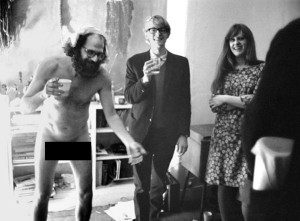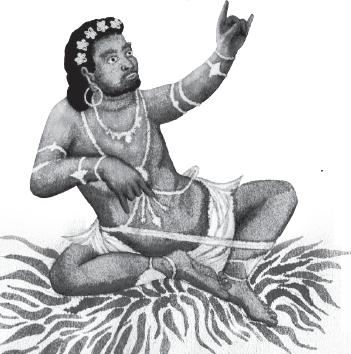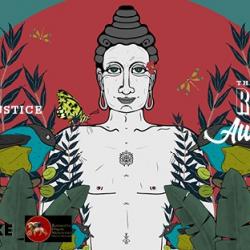
A recent discussion in the academic listserv H-Buddhism has me thinking again about David McMahon’s book The Making of Buddhist Modernism. As I wrote last fall:
I have pretty mixed feelings about the book, and the few scholars I’ve discussed the book with have largely concurred. On the one hand it is a “must read” because of its sweeping scope and rhetorical force. It really has many more positive things I could say about it than negative. On the other hand, it shouldn’t be taken as gospel – at all. Dealing with so many disparate areas of thought, the treatment of any in particular is necessarily limited.
Another post, about 2 weeks later, called “There is no Pure Buddhism” is also inspired largely by aspects of McMahon’s book. In the book, McMahon sets up the dichotomy of ‘traditional’ and ‘modern’ (or ‘modernist’) forms of Buddhism. Like any set of categories, this is an artificial, scholarly construct, but one that can be used to illuminate broad trends in the recent development of Buddhism. I’m tempted to bring up my friend, Chuck Prebish’s, ‘Two Buddhisms’ model for Buddhism in North America – so I will… Both models allow us to see something that we might have missed in all of the messy particularity of countless human beings practicing their religion. Both thus have illuminating power. But both become problematic when they are not properly understood. McMahon warns early in the book that:
By “Buddhist modernism” I do not mean all Buddhism that happens to exist in the modern era but, rather, forms of Buddhism that have emerged out of an engagement with the dominant cultural and intellectual forces of modernity. Buddhist modernism is a dynamic, complex, and plural set of historical processes with loose bonds and fuzzy boundaries. (p.6)
The problem that might arise here is trying to figure out what aspects of contemporary Buddhism have ’emerged out of an engagement’ with what is essentially ‘the West’, and which ones are simply the working out of internal dynamics. To put it simply, and perhaps too crudely, the book seems to suggest that the changes in Buddhist traditions over the past 200 years, because they are a) a change, and b) resemble something coming from the West must c) be caused by something in the West.
McMahon writes, ‘It is often said as a matter of course that modernist forms of Buddhism have been westernized, demythologized, rationalized, Romanticized, Protestantized, or psychologized…’ (p.8). But haven’t some teachers demythologized in the past? While some Tibetan traditions were spreading stories of Padmasambhava flying around subduing demons and leaving footprints in rocks, Tsongkhapa’s Lam Rim Chen Mo (15th century) presents largely demythologized, toned down account of the path to awakening. While some Japanese teachers were making a living going around telling people about the horrors and suffering of hell (complete with charts and graphs), Dogen’s Shobogenzo (13th century) provides a similarly toned down, direct teaching on the Buddha’s path to awakening.
And one of the characters McMahon brings out as a demythologizer (and psychologizer) of Buddhism was Chogyam Trungpa (I reviewed a recent film about him here). And yet, didn’t he also re-mythologize Buddhism at the same time with his emphasis of creating a Shambhala (a mythical Kingdom of peace and righteousness) and having his followers dress up in military clothes and march in formation?
As we can find trends of rationalization in ‘modern’ Buddhism, we can often find trends if irrationality beside them and the same goes for the other factors.
Returning to our eccentric Buddhist masters, in one chapter McMahon presents a contrast:
A stark juxtaposition of scenes. In the fi rst, a row of black-robed, tonsured monks in a perfectly straight line sit dead still in identical postures, their backs erect, hands joined in a precise oval on their laps, eyes cast down, mouths closed. Another monk walks slowly past them holding upright a long stick, fl attened on the end. His eyes drift to one of the seated monks, and he stops in front of him. He turns toward the monk, and they bow to each other. Then he raises the stick into the air and smacks it down on the seated monk’s right shoulder four times in rapid succession, shattering the stillness of the meditation hall with sharp, staccato cracks. He repeats the beating on the left shoulder. The two again bow politely to each other, the seated monk slightly lower than his assailant. The wielder of the stick then continues his slow, deliberate pace past the row of seated figures, still as stone statues.
The second scene is of a large Victorian room with built-in bookcases and a baby grand piano. Four or fi ve occupants are stand-ing around talking, drinking, and smoking. Another, a long-haired, bearded man in a suit and tie, is dancing in the center of the room. He leaps in the air and twirls around, his tie swinging up into his face. His arm glides quickly from his hips, making a serpentine arc in the air until reaching its peak above his head and then gliding in a fl uid path back down to his torso. His other arm then makes an identical pattern, and they alternate in rapid succession. His face beams happily, and his hands gesture as if he is a master of ceremoniesoffering the contents of the room to an imaginary audience. For a second he falters; then he regains his balance and his unpremeditated and unself-conscious manner. His movements tread the fine line between pliable elegance and clownish goofiness, with a tendency toward the latter. (pp. 117-8)
McMahon continues, ‘It is difficult to imagine the two scenes having any connection to each other or bodies doing such different things. It is hard, too, to conceive that these scenes could be have much to do with the same religious tradition.’ Why? Unless we have some narrow, preconceived (orientalist) notion of what this religious tradition is and should be, this shouldn’t be hard to conceive. It’s like watching “Into Great Silence” and then attending a Catholic summer camp filled with kids singing, roasting marshmallows and jumping in lakes and saying ‘it’s hard to conceive that these scenes could be have much to do with the same religious tradition.’
One might suggest that such Catholic summer camps have undergone a process of westernization, rationalization, etc… Or we might find that the Catholic tradition, being quite broad both historically and geographically (and philosophically I might add) has contained elements of both extremes deep into its own history.
My hunch is that Buddhism is quite similar. But McMahon argues that the above (first) picture is ‘how Zen is typically practiced on the ground’ (in Japan) – and thus the suggestion that whenever we see Zen practitioners behaving otherwise – especially being a bit crazy as Allen Ginsberg is in the second description, it is because they have adopted aspects of modernism (in this chapter, the adoption of Western Romanticism). McMahon admits that there are stories of crazy Zen Masters (and I’d add other traditions as well), but this was always with the backdrop of the much more common silent, zazen, black-robes and stick kind of practice. I don’t think this is historically accurate at all.
Other than a layover in Tokyo, I haven’t spent time in Japan and I’m far from an expert in East Asian Buddhism. However, having spent some time in monastaries and temples in China, Taiwan, and S. Korea, I generally saw monastics doing various kinds of work, at other times chanting lengthy liturgies, dealing with temple/local politics, and so on. Furthermore, this was in visiting the more stable ‘orthodox’ temples. There were and are plenty of ‘fringe’ Buddhist/syncretic/shamanistic practicioners to be found in these countries and many of these would no doubt be right at home next to Ginsberg and friends. The outpouring of names and dates in the H-Buddhism discussion of eccentric Buddhist masters only accentuates this point.

And if we point to Ginsberg as a representative of Zen in the West, we are likewise being historically inaccurate. We forget all of the Asian immigrants, for one, who have established centers in the West, as well as the converts who have adopted various degrees of ‘traditional’ Ch’an/Zen.
So the images set out a stark contrast that just isn’t there.
Again we can think of the ‘Two Buddhisms’ model and admit that okay, the ‘modernist’ and ‘traditional’ categories are still useful – in the right context and to a certain degree. The ‘Two Buddhisms’ model presents an excellent image of Buddhism in N. America in the 1970s (I highly recommend Prebish’s recent memoir, which I reviewed here). But be careful. Just as you cannot simply assume that an Asian Buddhist in America is not a convert or that a Caucasian didn’t grow up in a Buddhist family, you cannot simply assume that eccentric Buddhist masters today, or in the past, are a result of the incorporation of Western Romanticism.











